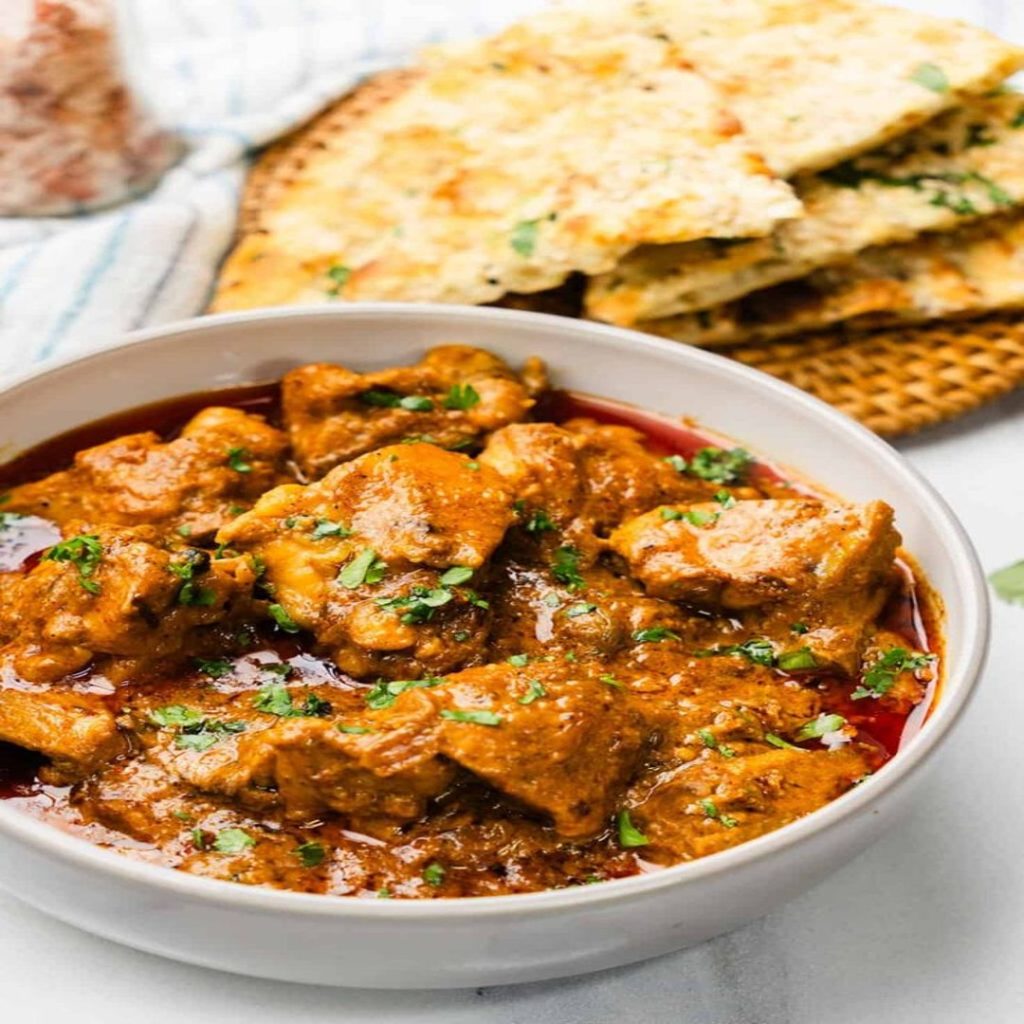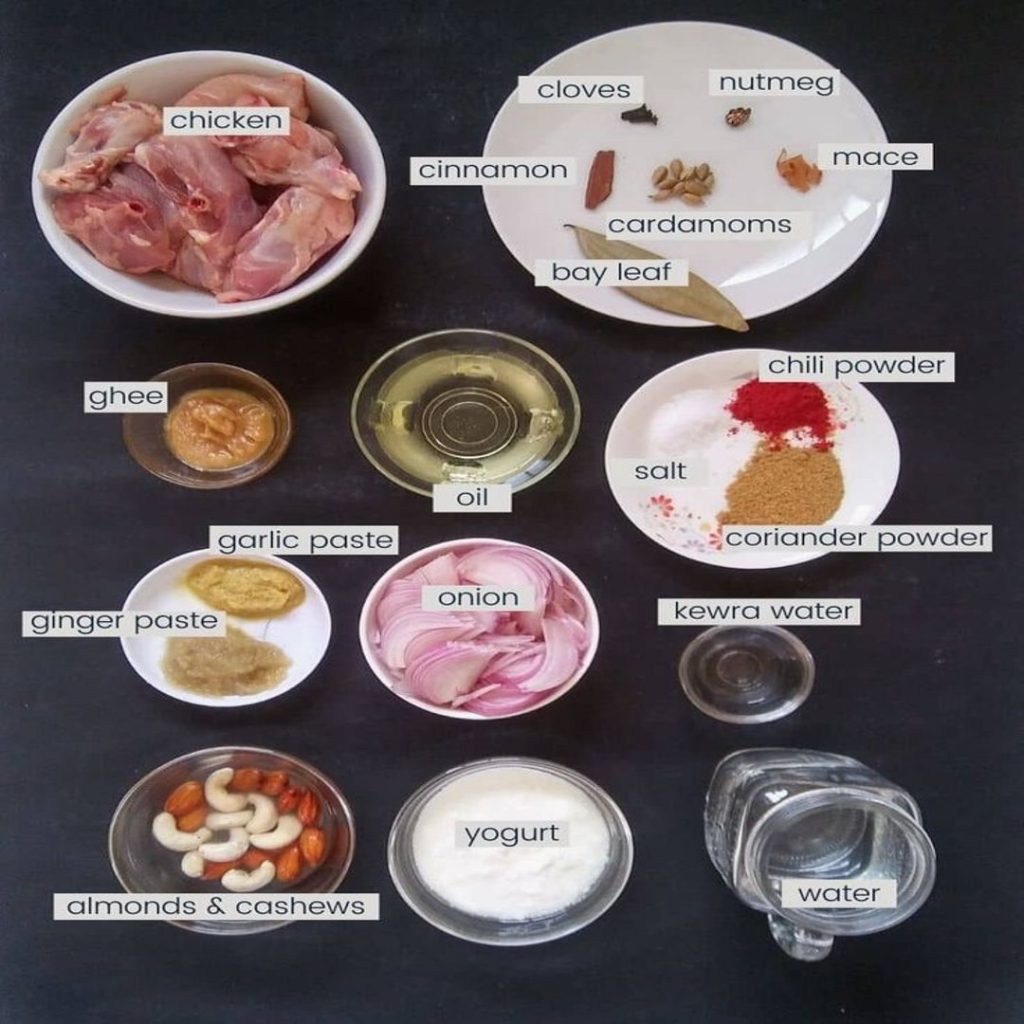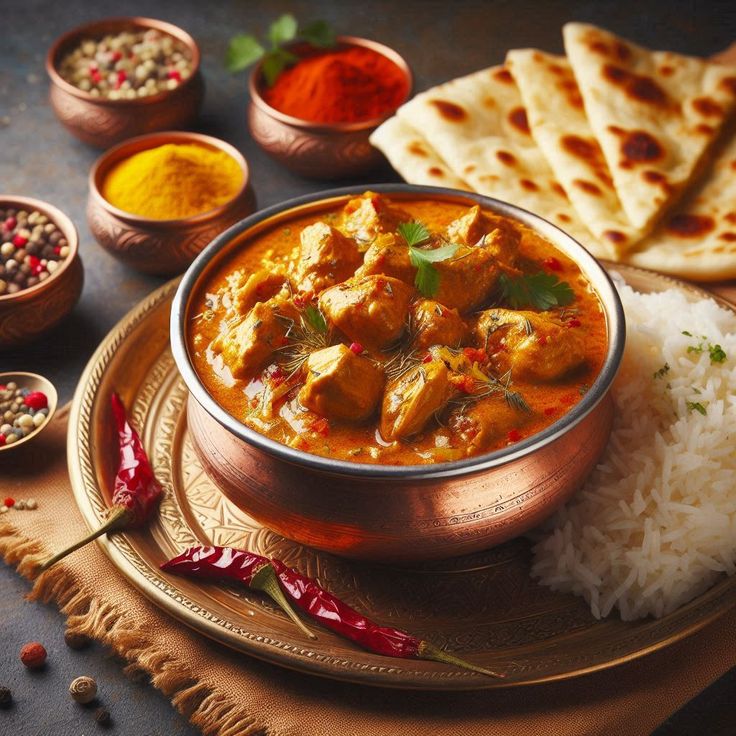Introduction:
Korma is a rich, flavorful dish that traces its origins to the Mughal kitchens of South Asia. With a perfect blend of spices, cream, and nuts, it brings a luxurious touch to everyday meals. Whether you’re a fan of chicken, mutton, or even vegetables, this korma recipe is versatile and packed with flavor. Today, we’ll walk you through a special korma recipe, guaranteed to impress your family and friends!

Ingredients:
For the Marinade:
- 500g chicken/mutton (or 2 cups mixed vegetables)
- 1/2 cup yogurt (plain, full-fat)
- 1 tablespoon ginger-garlic paste
- 1 teaspoon garam masala
- 1/2 teaspoon turmeric powder
- Salt to taste

For the Korma Gravy:
- 2 tablespoons ghee or vegetable oil
- 2 medium onions, finely sliced
- 2 tablespoons cashew nuts or almonds (optional: 10-12 soaked overnight)
- 1/2 cup heavy cream or coconut milk (for a lighter option)
- 2-3 green cardamom pods
- 1 cinnamon stick
- 4 cloves
- 1 bay leaf
- 1 teaspoon coriander powder
- 1/2 teaspoon cumin powder
- 1/2 teaspoon red chili powder (adjust to taste)
- 1/4 teaspoon ground nutmeg (optional)
- 1/4 teaspoon saffron strands soaked in warm milk (optional)
- Salt to taste
- Fresh cilantro for garnish
Step-by-Step Instructions:
1. Marinating the Protein:
Start by marinating the chicken, mutton, or vegetables. Combine the yogurt, ginger-garlic paste, garam masala, turmeric, and salt in a bowl. Add the chicken (or your protein of choice) and coat evenly. Allow it to marinate for at least 1 hour, but for best results, leave it overnight in the fridge.
2. Preparing the Onion-Cashew Paste:
In a large pan, heat 1 tablespoon of ghee or oil over medium heat. Add the sliced onions and cook them until they are golden brown and caramelized. This step is crucial as it forms the base of the korma’s rich flavor. Once the onions are browned, remove them from the pan and set aside to cool.
In the same pan, add the cashews or almonds. Fry them until golden, then remove from heat and let them cool.
Once the onions and nuts have cooled down, blend them together into a smooth paste with a few tablespoons of water. This paste will add a creamy texture and a nutty undertone to the korma.
3. Cooking the Korma:
In the same pan, heat the remaining tablespoon of ghee or oil. Add the whole spices: cardamom, cinnamon, cloves, and bay leaf. Fry them for 1-2 minutes until fragrant.
Add the marinated protein or vegetables into the pan, and cook until they are seared and slightly browned on the outside. For chicken or mutton, this will take around 8-10 minutes. For vegetables, 5-7 minutes is enough.
4. Adding the Onion-Cashew Paste:
Stir in the onion-cashew paste. Mix well and let it cook for 2-3 minutes, ensuring the raw smell of onions disappears. Then, add the ground spices: coriander powder, cumin powder, red chili powder, and nutmeg. Sauté for another 2-3 minutes, allowing the spices to combine and release their aroma.
5. Simmering the Korma:
Pour in 1/2 cup of water (or more depending on your desired consistency), and bring the mixture to a gentle simmer. Cover the pan and let the korma cook on low heat for 20-25 minutes if using chicken, 35-40 minutes for mutton, or until the meat is tender. For vegetables, cook for 10-12 minutes or until they are soft but not mushy.
6. Creamy Finish:
Once the protein is fully cooked, stir in the heavy cream or coconut milk, along with the soaked saffron milk if using. Simmer the korma for another 5-7 minutes until the gravy thickens and takes on a luxurious, creamy texture.
7. Final Garnish:
Taste and adjust seasoning as needed. Garnish with fresh cilantro and serve hot with naan, rice, or parathas.
Tips for a Perfect Korma:
- Use Full-Fat Ingredients: The richness of korma comes from yogurt, cream, and ghee. Opt for full-fat versions to get that authentic creamy taste.
- Don’t Skip the Marination: The longer the chicken or mutton marinates, the more flavor it absorbs, making the final dish even more delicious.
- Slow Cook for Tenderness: Korma should be slow-cooked to allow the spices to meld together, and for the meat to turn soft and tender. Patience is key!
- Cashews for Creaminess: While cashews or almonds are optional, they provide a nutty richness that elevates the dish. If you’re allergic or prefer a lighter dish, you can skip them.
Variations:
- Vegetarian Korma: Swap the meat for a mix of vegetables such as potatoes, carrots, peas, and cauliflower. Paneer (Indian cottage cheese) is also a great option.
- Vegan Korma: For a vegan version, replace the yogurt with plant-based alternatives and use coconut milk instead of cream.
- Low-Fat Korma: To lighten the recipe, use low-fat yogurt and replace cream with light coconut milk. You can also cook the onions with less oil by caramelizing them slowly.
- Kashmiri Korma: This version uses yogurt, dried fruits like raisins, and saffron to add a slightly sweet touch. The use of cardamom and cinnamon is more prominent, giving it a distinct flavor.
Serving Suggestions:
- With Rice: A fragrant basmati rice or a rich biryani pairs perfectly with korma. The rice absorbs the creamy gravy, making each bite flavorful.
- With Indian Breads: Serve korma with soft naan, garlic naan, or buttery parathas. These breads are ideal for soaking up the rich gravy.
- Salad and Pickles: A side of fresh cucumber-onion salad or tangy pickles can cut through the richness and provide a refreshing contrast.

